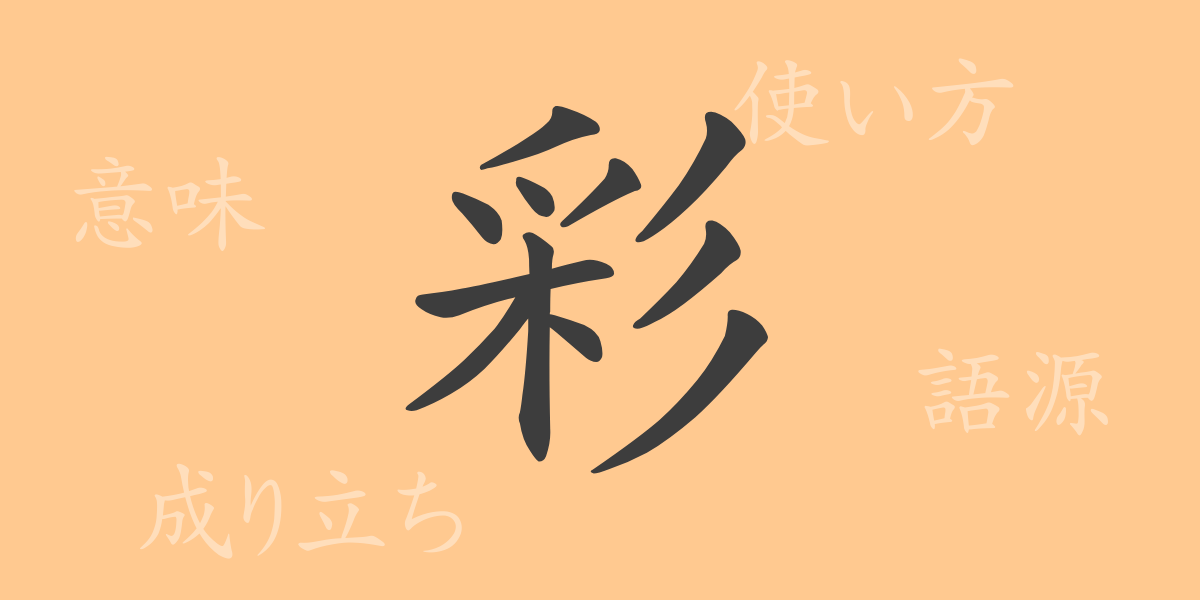The common-use kanji “彩” (sai), which symbolizes the beauty of the Japanese language, evokes vivid images. Let’s delve into the world of “彩” (sai), which captivates people’s hearts with its presence while blending into our daily lives. In this article, we will reveal the full scope of “彩” (sai) from its etymology, meanings, usage, readings, and idioms that use “彩” (sai).
Etymology of 彩 (sai)
The kanji “彩” (sai) originated in ancient China, where its form represents the act of adding color to threads or fabrics. From the act of adding color, it came to signify decoration and beauty. In Japan, this kanji has been used since ancient times, and its meaning has expanded further within the unique Japanese culture and language.
Meanings and Usages of 彩 (sai)
The kanji “彩” (sai) means “coloring” or “vividness,” carrying the nuance of making something beautiful by adding color. In Japanese, it is commonly used in forms such as “彩り” (irodori) and “彩る” (irodoru), and can be seen in various contexts like cooking, nature, and art.
Reading, Stroke Count, and Radical of 彩 (sai)
The kanji “彩” (sai) reflects its richness in meaning and form in its readings and structure.
- Reading: In the on’yomi reading, it is read as “サイ” (sai), and in the kun’yomi reading, it is read as “いろどる” (irodoru).
- Stroke count: It consists of 11 strokes.
- Radical: The radical is 彡 (san-zukuri).
Idioms, Phrases, and Proverbs Using 彩 (sai) and Their Meanings
Idioms and phrases that include “彩” (sai) reflect the diversity and richness of the world represented through colors. For example, “色彩豊か” (shikisai yutaka) refers to something with a variety of colors and a beautiful appearance, while “生活に彩を加える” (seikatsu ni irodori o kuwaeru) means to bring enjoyment and change to everyday life.
Conclusion on 彩 (sai)
The common-use kanji “彩” (sai) in Japanese holds the wonderful ability to make things beautiful by adding color. This single character embodies the beauty of nature and the richness of life. The use of “彩” (sai) in Japanese language adds deep colors to our lives and expresses cultural diversity. Let’s continue to find words that brighten the world through “彩” (sai).

























